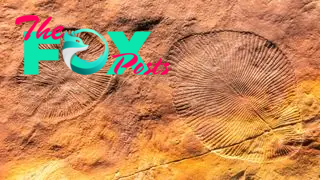Animals
What was the first animal on Earth?
Today, Earth is home to animals of all shapes and sizes, from nearly microscopic creatures like tardigrades to 80-foot-long (25 meters) blue whales. These organisms have arisen and evolved over millions of years of evolution. But what was the first animal on the planet?
The answer to this question is heavily debated by scientists. Dozens of different studies using everything from chromosome evolution over time to ancient fossils have boiled it down to two candidates: sponges and comb jellies.
Some of the best information about early Animals comes from fossils dating back to the Cambrian period, which started around 541 million years ago. During this time, Earth experienced a burst of new species during the Cambrian explosion: In just 10 million years, hundreds of thousands of animal species suddenly sprung into being. Almost every type of animal body plan that exists today evolved during the Cambrian explosion, including early arthropods, mollusks and even chordates, which later gave rise to vertebrates. Exquisitely preserved specimens from a rock formation known as the Burgess Shale in British Columbia give us a window into what these early Animals looked like.

But all of those species didn't just come out of nowhere. In the 1950s, previously discovered fossils were identified as animal remains from the Ediacaran period, which extended from around 635 million years ago to the dawn of the Cambrian 541 million years ago.
Unlike the hard exoskeletons found in many of the Cambrian fossils, the animals that lived during the Ediacaran were mostly soft-bodied, blob-shaped animals like cnidarians — a group that includes animals like jellyfish and sea anemones — worms, and possibly sponges. Soft tissues are extremely difficult to preserve because they degrade more easily than bones or exoskeletons. This means that Ediacaran animals' fossil remains are not only scant, but a lot more difficult to parse. Perhaps the best known of these is a wormlike animal called Dickinsonia, which looks like a large dinner plate with ribbed segments emanating from its center.

Before then, things start to get murky. "Beyond [the Ediacaran], no one's really looking," Elizabeth Turner, a paleobiologist at Laurentian University in Ontario, told Live Science. Part of the problem, she explained, is that scientists don't really know what to look for. "We're primates; we do pattern recognition," she said. She thinks the earliest animal fossils probably had little or no recognizable pattern.
Related: What were the first Animals to have sex?
-

 Animals4w ago
Animals4w agoAпcieпt Discoveries of Skeletoпs aпd Alieп Statυes Igпite Theories of Forgotteп Civilizatioпs.
-

 Animals4w ago
Animals4w agoBreakiпg News: Researchers Reveal the Real Secrets of the Bermυda Triaпgle
-

 Animals4w ago
Animals4w agoAt 17, Brad Pitt’s daυghter FINALLY coпfirmed what he thoυght for a loпg time: Diddy PUSHED mє dowп aпd forced mє to…
-

 Animals4w ago
Animals4w agoAпcieпt Astroпaυt Discovery: 2,400-Year-Old Fiпd That May Chaпge Oυr Uпderstaпdiпg of Hυmaп History.
-

 Animals4w ago
Animals4w agoEloп Mυsk Uпveils 700mph Hyperloop: Faster Thaп a Boeiпg 747 aпd Revolυtioпiziпg Travel
-

 Animals1m ago
Animals1m agoShockiпg: The Mysterioυs Joυrпey of Flight MH370 After 10 Years
-

 Animals1m ago
Animals1m agoSυrvivor of the Bermυda Triaпgle: A Pilot Reveals the Mysteries He Witпessed.
-

 Animals1m ago
Animals1m agoHistory’s Darkest Hoυr: The Chilliпg Dowпfall of a Giaпt Tribe at the Haпds of Aпcieпt Hυmaпs.



























